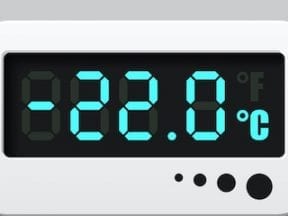Basic inventory management involves tracking quantities by channel, location, and return rates. Key performance indicators, however, are far more critical for driving profits. In this post, I’ll address three essential inventory KPIs: turnover, carrying costs, and opportunity costs.
Inventory Turnover
Inventory turnover is the cost of goods sold divided by the average inventory by period.
Cost of Goods Sold ÷ Average Inventory for Period
Say the cost of goods sold is $100,000 per year, and the average inventory for the year is $10,000. Inventory turnover is therefore 10, as in:
$100,000 ÷ $10,000 = 10
There’s no right or wrong answer for this KPI. It’s usually by industry. Some companies turn inventory six times per year, some three, some 20. But high performers tend to turn their inventory more frequently than others in their category.
Use the inventory turnover KPI to make better decisions on pricing, manufacturing schedules, purchasing from suppliers, and marketing. If turnover is too high, such as 20 times per year, that might indicate strong sales that risk being out of stock. Or you could be pricing your products too low.
Conversely, if turnover is too low, you might be stocking the wrong products, or your merchandising or pricing may be a problem. Monitor inventory turnover at least quarterly — monthly is better. Compare results to prior periods.
Carrying Costs
The second critical inventory KPI is carrying costs, which are secondary expenses such as warehousing, storage, fulfillment and accounting personnel, and interest expense. It also includes “leakage,” such as theft, breakage, and spoilage.
Many retailers compute carrying costs as the total inventory cost divided by four.
Total Inventory Cost ÷ 4
If your annual total inventory cost is $100,000, your carrying costs are likely somewhere around $25,000.
Opportunity Costs
Perhaps the most important inventory KPI is opportunity costs — the cost of making a bad inventory investment. Perhaps you’ve launched a new product that’s a flop. Or maybe you purchased too much of a slow-moving item, which limits your ability to buy high-demand goods.
Carrying costs can be high. They are usually due to subjective decisions.
To help make better decisions, consider SKU rationalization reports. There are likely dozens of ways to rationalize inventory. One way is to divide your inventory into three segments.
- Fast-moving/high-profit products. This may be a small portion of your current inventory.
- Slow-moving/high-profit products. Perhaps most of your inventory.
- Slow-moving/low-profit products. A decent percentage of inventory.
Then, use those segments for better decisions. Increase the purchases of fast-moving/high-profit items. Monitor and maintain slow-moving/high-profit items. And decrease slow-moving/low-profit items as fast as possible.




